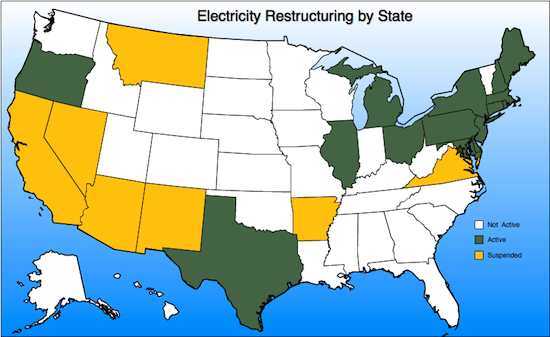Lynne Kiesling and I have an article in the Fall 2017 Regulation magazine asserting “the need for electricity retail market reforms” (PDF). Our general theme is, as the subtitle puts it, “An innovative 21st century retail electric power market is within reach, but won’t emerge until we ditch 20th century regulations.” We begin:
School budgets always seem tight, so you might be surprised that state regulators would seriously consider a proposal that would increase school operating costs by millions of dollars as part of an effort to boost monopoly electric utility profits. Yet Michigan legislators came close to adopting such a proposal in 2014 when they considered ending the state’s customer choice option for retail electricity consumers.
School administrators working with the nonprofit Michigan Schools Energy Cooperative (MISEC) told legislators that retail energy choice helped them save almost $15 million in 2013. MISEC has helped Michigan schools save over $120 million since it was formed in 2000, the year the state first allowed customer choice. Eliminating customer choice meant schools would have to cut services elsewhere.
Ever since Michigan allowed retail customer choice for electric power, the state’s regulated electric utilities have pushed to return to the comforts of being regulated monopolies. In 2008 the utilities convinced regulators to cap the popular option at just 10% of the market. Average retail power prices were just below the national average when customer choice began in the state, and were still below the national average in 2008. Now, however, Michigan prices are above the national average and the waiting list of retail customers wanting to choose their own electric suppliers has grown into the tens of thousands. Those whom regulation excludes from the market are clamoring for choice.
Most states still do not allow customers to make their own choices with respect to electric power suppliers. We think the case can be made that states should allow it. Consumers should insist.
In the article, we explore a bit of recent history with respect to retail electric power market reform, examine some of the long ago history of the rise of state regulation of electric power, and consider lessons from the dynamic world of telecommunications and the internet. Retail electric power markets could be dynamic like the internet rather than staid like your municipal water options. Currently the law works against that outcome. Consumers would be better off if such laws changed. We suggest a bit about what to do and why.
At one time the balance of interests may have appropriately tipped toward state-protected monopoly electric power companies, but even if that was once true times have changed in ways likely making it no longer true. If you tend to favor competition and oppose government grants of monopoly, it is time to take a fresh look at reforms for electric power regulation in the United States.

Dear Michael and Lynne,
Thanks for a timely and valuable article.
In response, please consider the post “A Generative Dialogue for the emergent Puerto Rico energy ecosystem that ditches 20th century regulations ( http://www.energycentral.com/c/cp/generative-dialogue-emergent-puerto-rico-energy-ecosystem-ditches-20th-century ),” with the summary: “Please welcome to the generative dialogue an alternative to the EWPC-AF in the retail marker reform to ditch 20th century regulations proposed by Michael Giberson and Lynne Kiesling in an article in the Fall 2017 Regulation magazine.”
Best regards!
José Antonio
Please consider the Medium story “A #GlobalDebout summary of the Generative Dialogue useful for the people of #PuertoRico ( https://medium.com/@gmh_upsa/a-summary-of-the-generative-dialogue-useful-for-the-people-of-puertorico-as-an-instance-of-4d265a1417ad )” in order to send it to decision makers.